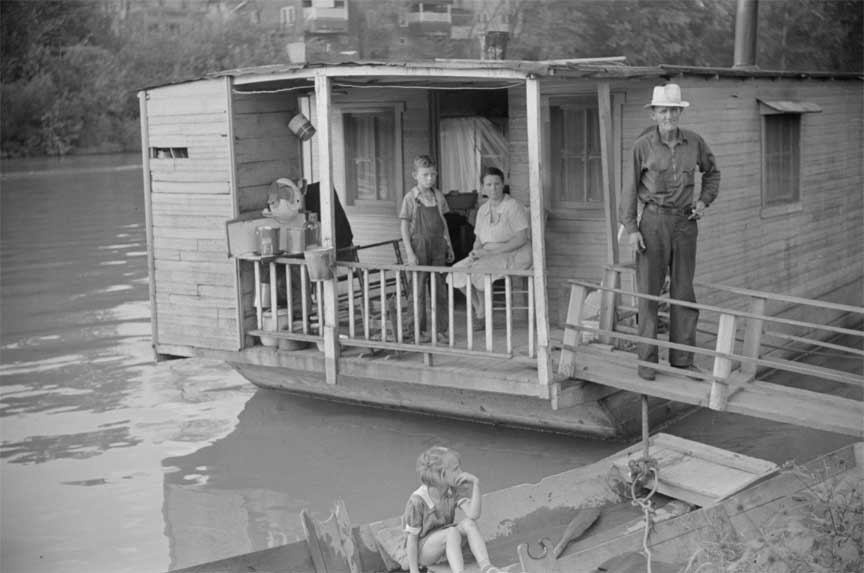WPA Created

-
Family living on riverboat, Charleston, West Virginia. Husband now on WPA (Works Progress Administration) labor
In 1935, the Congress approved the Emergency Relief Appropriation Act. It allocated 4.8 billion dollars to put people to work.
The largest part of the appropriations went to the Works Progress Administration. The W.P.A. built or improved 20,000 hospitals, schools, airports and playgrounds. In 1935, it employed 3.5 million workers. It even had extensive programs for unemployed artists and writers. By the time it was closed in 1943, it had employed over 8.5 million people.
The Emergency Relief Appropriations Act of 1935 was signed into law by President Franklin Roosevelt on April 8, 1935. Based on the act President Roosevelt issued executive order 7034 establishing Works Progress Administration. It replaced the Federal Emergency Relief Administration.
Harry Hopkins supervised the newly formed agency. The goal of the agency was to employ at least one person from every household. The agency was first funded with $4 Billion which is equivalent to $71.4 billion in today's money. The WPA went ahead and built public buildings and roads in every state of the country. It even had a divisions for musicians, artists, writers, and actors.
Between when it was established and when it was disbanded in 1943 with Americans fully employed during World War II the WPA employed 8.5 million. At its peak, it employed 3,334,594 people. Workers received between $19 per month and $94 per month depending on the location and skills of the workers.
During the course of the agency, it built 40,000 new buildings and improved 85,000 other buildings including building 5,900 new school, 9,300 auditorium, and gyms. The WPA built 1,000 new libraries, 7,000 new dormitories, 900 new armories. It created 1,686 parks. In total it spent $11.4 billion equivalent to $190 billion in today's money.
 >
>